A wealth of literature illustrates China's relationship with Africa in all of its facets. In comparison, there isn't nearly enough research on India's engagement in Africa in its entirety. In that sense, there is hardly any literature that deals specifically with the India-Africa development partnership. Over the years, multiple changes in political leadership have taken place in both India and Africa, particularly in Africa, where the change of government is often by force. However, the partnership remained constant. In the author's words, bringing African participation to a more significant number of international fora and participating in the new emerging order was a steady Indian policy.
Definitely, there have been ups and downs in the relationship. Indian diplomats and policymakers have had their periodic doses of reality. For example, during the Sino-Indian conflict of 1962, only two African countries, Ethiopia and Nigeria, supported India. Or later, in 1996, the African block preferred Japan to India for the seat of the United Nations Security Council. India received its heaviest jolt in 2000, when Nelson Mandela, the first elected President of independent South Africa, not only criticised India on the nuclear issue but also expressed his concern over Kashmir and offered to mediate.
Nevertheless, the spirit of partnership never lost its spark. And today, India and Africa have developed a vibrant partnership animated by the spirit of developing together as equals, focussing on capacity building, development cooperation and economic and technological initiatives.
This spirit of cooperation is the connecting thread of the book. The word Harambee is a Swahili word for cooperation. This book consisting of 12 chapters traces and analyses the evolution of Indian development cooperation with Africa.
India's engagement with Africa got the structured form when in 2008, India organised India Africa Forum Summit (IAFS). Three editions have been held so far, 2008 in India, 2011 in Ethiopia and 2015 in India again. For IAFS II, though the location was in Africa, the Indian side had to perform the entire role of host in a foreign country. In the first two IAFS, the participation of African countries was restricted by Banjul Formula, in which maximum of 15 countries could participate. Still, in 2015, no such restrictions were imposed and representatives of all 54 countries were present in India, making it an astounding success. The IAFS IV, delayed by the COVID pandemic, should occur sometime this year, tentatively in Mauritania. The author himself was the Sherpa for IAFS II, and the recollection of his experience is a real treat to the readers.
The main components of India's development partnership are Lines of Credit (LoC), Grant assistance, Small Development Projects (SDP), Technical Consultancy, Disaster Relief and Humanitarian aid, as well as capacity-building programmes under the Indian Technical and Economic Cooperation Programme. The author distinguishes Indian development partnerships from traditional partners as they focus on the micro-sustainability of projects rather than on macro-sustainability.
However, the author also points out some challenges related to LoCs. The desire to touch the uncharted territories has led the MEA to support many unsustainable projects. There is an unscrupulous practice among the Indian companies to bag the projects with the lowest quotation and then not deliver on the projects, resulting in a bad image of the country. The author gives a quirky example comparing India and China in project delivery. When China promises to finish their project in three years, they generally take six. When India promises four years, it never really gets over. However, the author also cites the example of projects where the project got delivered even before its due deadline such as one water project in Tanzania.
The politicisation of project location by the African Union is another significant hindrance. The author gives an example where India wanted to invest in a civil aviation academy and asked for a site. However, based on their quota of allocation, African Union suggested Chad. The project never took off. Finally, the process of LoCs has become cumbersome over the years, thus losing its competitive edge. Concerning the effectiveness of these LoCs, as per the 2015 guidelines, all projects over $50 million require an independent evaluation. However, no such assessment has been undertaken so far. In this context, the author suggests unilateral grant enhancement as a way forward. He also advocates for considering lifecycle costs rather than straight forward lending and repayment. The author has provided several other suggestions that can be adopted after appropriate pilot testing.
The trade between India and Africa, another essential pillar of relations, has grown, even during the pandemic. DFTP announced by India is currently availed by 38 African nations. Today India is Africa's fourth-largest trading partner and fifth-largest investment partner. The India-Africa Business Council (IABC), created during IAFS II in 2011, can also be a potential tool to increase the quality and quantity of trade. Several Indian Banks are working in Africa, such as SBI, BoB, and BoI. Surprisingly, when Africa is in dire need of different financial products, these banks face a decrease in business opportunities. Indeed, they need to understand the local conditions better to be able to continue their operations successfully.
Since 1964, the India Technical and Economic Cooperation (ITEC) programme has played a decisive role in the India Africa partnership. Today, Africa is the largest recipient of the ITEC program. It is a customised training programme based on the micro-level needs of the project country. In that spirit, India has launched a unique ITEC course for the Cotton-4 countries (Benin, Burkina Faso, Chad and Mali). ITEC Executive programme is another customised programme targeting senior people from partner countries and providing training, workshops, study and experience sharing visits, etc. Over the years, ITEC has created an extensive network of alumni across the continents who have become ITEC torch-bearers in their respective countries and, in the process, developed a powerful cultural bridge between India and their home countries.
Starting in 2004, the Pan African e-Network (PAeN), the vision of Late Indian President APJ Abdul Kalam, has contributed to tele-education and telemedicine. A total of 19 countries have signed memorandums of understanding (MoUs) to collaborate on tele-education and telemedicine networks. Six IT centres have been developed in South Africa, Egypt, Morocco, Lesotho, Ghana, Namibia, and Tanzania over the last five years, as well as a centre for geo-informatics applications in rural development in Madagascar and Niger. Similar to ITEC, the PANEP has been a great perception builder for India as a natural partner for Africa. Building on the success of PANEP, in 2019, EVAB (e-Vidyabharati and e-Arogya Bharati) was launched. India also is the only Asian country to be a member of the African Capacity-Building Foundation (ACBF) and contributed $1 million for its skill development and poverty alleviation programmes.
In March 2018, African leaders agreed to establish an Africa Continental Free Trade Area (AfCFTA). Covering more than 2 billion African population, majorly youth, it aims to create around 15 billion GDP for each country and an overall 3 trillion US$ for the continent in the immediate future. The CFTA has created substantial investment opportunities in some priority sectors. For example, nearly $400 billion in investments are necessary for the transportation sector alone to reap the full benefits of the CFTA. Other vital sectors where India might add value are trade-in Services, ICT, transport, financial services and professional bodies. Investing in the real sector will remain a priority, and Indian businesses can contribute.
Between March 2015 and October 2019, the author recounts India's senior officials, including the President, Vice President, and Prime Minister, have made 34 outgoing visits to Africa. During the same time period, India received nearly 100 African leaders for bilateral and multilateral engagements. In 2018, India approved 18 new missions to be opened in Africa to help implement and closely monitor the commitments made during IAFS III. This will also take the number of Indian tasks in Africa from 29 to 47. Out of the 18, in July 2018 itself, India opened its first resident mission in Rwanda. But we are not the only one. In the last decade, Turkey has opened 16 new missions, Qatar has opened 11 and Japan has opened nine. Brazil, Saudi Arabia, the UK, Germany and Venezuela have also opened five new embassies. The extent of competition between different traditional and emerging countries to reach out to Africa has made some people term it as new scramble for Africa.
In chapter two of the book, the author detailed the changes in the Ministry of External Affairs under Modi government and how that contributed to more attention towards Africa. In 2002, there was a major umbrella of Africa division under which the African continent of was divided into two parts, one for east and southern Africa and the other for central and western Africa. However, under the new administration of the Modi government, the Africa portfolio was shifted from the Secretary of State (West) to the Secretary of State (Africa) in 2015. As the same department was in charge of the Development Partnership Administration, it smoothened the Africa-related work's functioning. In January 2020, there was further change as an Additional Secretary was explicitly appointed for Africa who would work closely with the respective secretaries.
Similarly, an Additional Secretary was appointed in 2012 to oversee the Development Partnership Divisions under the Secretary ER. However, these were not consistent policies. He also explained in detail the ten guiding principles for India's Africa engagement that PM Modi announced in his speech to Ugandan parliament in 2018.
Being a diplomat himself, the author could easily spell out the internal challenges that the Indian Foreign Ministry is facing. One interesting example was given in the book when South Africa approached India to support its membership in 2009 for then BRIC. But for some reason, India took the position that it required a consensus and did almost nothing to prepare such a consensus. This gave away the opportunity to China, which in its December 2010 summit, arranged for South Africa to become a member. India lost an opportunity to take credit for this even though India had an abiding relationship with South Africa. This largely stemmed from a lack of coordination within the MEA as Africa was dealt with by one secretary and IBSA and BRIC by another, with the latter possibly viewing Africa as having a lower priority.
It is true that given the scarcity of academic writing on the subject, the author scores high by collating all the partnership angles right up to the start of the Covid pandemic. Till date, no worthwhile analysis has yet been made on the impacts of LoCs or ITEC programmes in Africa. Instead, the author suggested several ways-forward based on his experience to enhance the effectiveness of these tools. However, notwithstanding the meticulous details of all these cooperation, insights about their effectiveness in either helping Africa or spreading India's goodwill are much needed. The author might consider it for the next book an incisive analysis that would be useful for scholars.
Although the book is 500 pages long, it would have been wonderful if the author could dedicate a few extra pages to discuss the possibilities and essence of bilateral relations in the military, maritime, energy and institutional sectors with respective recommendations. The importance of the "China factor" in shaping the Indo-Africa partnership would have been another exciting addition.
To conclude, the author's effort in collating and presenting this enormous amount of data in a structured manner is commendable. This book represents an updated compendium of all the branches of the India-Africa development partnership. As seen recently, there is a growing interest in studying India-Africa relations, with Symbiosis School of International Studies (SSIS) launching a Masters of Art in African Studies (Geo-economics and Foreign Policy). This book will have lots of value for students who want to learn about India-Africa relations. Similarly, students interested in the role of emerging powers from the South, international development, foreign policy and global political economy will also have a lot to learn from this book.


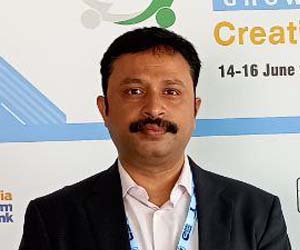


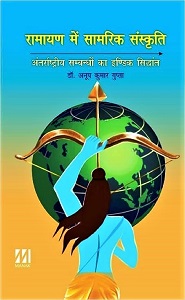
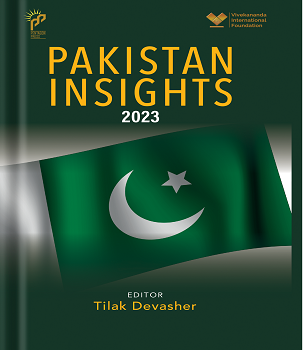

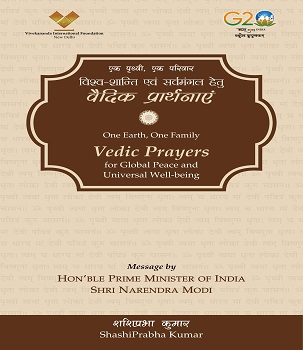
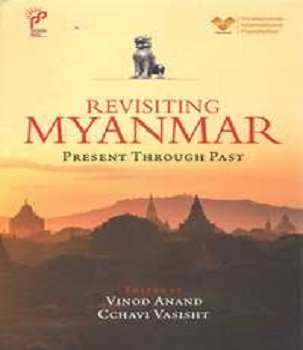
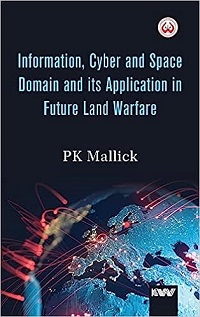
Post new comment